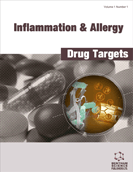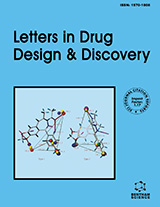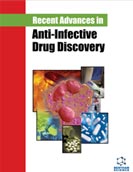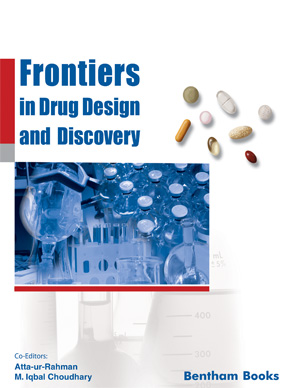Abstract
Animal models are vital instruments of the drug discovery process. In addition to assessing the efficacy of candidate molecules, in vivo disease models also help validate the therapeutic potential of molecular targets. Over recent years, several molecules that have shown efficacy in preclinical models of respiratory diseases have failed to translate into new medicines for chronic respiratory conditions such as asthma, chronic obstructive pulmonary disease, and idiopathic pulmonary fibrosis. As such, many scientists have argued that these systems are of limited value; however, we propose that a more careful and thorough approach to the characterization of these models and the interpretation of data generated using these systems would improve their translational utility. Herein, we describe two key elements of our strategy aiming to improve the predictive nature of these models: 1) Novel bioinformatics methods that can be used to identify animal models that best represent specific patient populations; and 2) Innovative physiological techniques that will improve our ability to discover drugs that can restore the functional capacity of lungs damaged during the course of the disease.
Keywords: Animal models, asthma, bioinformatics, COPD, IPF, lung physiology, respiratory disease, translational research.
Inflammation & Allergy - Drug Targets (Discontinued)
Title:Predicting Drug Efficacy Using Integrative Models for Chronic Respiratory Diseases
Volume: 12 Issue: 2
Author(s): Christopher S. Stevenson, Sriram Sridhar and Jonathan E. Phillips
Affiliation:
Keywords: Animal models, asthma, bioinformatics, COPD, IPF, lung physiology, respiratory disease, translational research.
Abstract: Animal models are vital instruments of the drug discovery process. In addition to assessing the efficacy of candidate molecules, in vivo disease models also help validate the therapeutic potential of molecular targets. Over recent years, several molecules that have shown efficacy in preclinical models of respiratory diseases have failed to translate into new medicines for chronic respiratory conditions such as asthma, chronic obstructive pulmonary disease, and idiopathic pulmonary fibrosis. As such, many scientists have argued that these systems are of limited value; however, we propose that a more careful and thorough approach to the characterization of these models and the interpretation of data generated using these systems would improve their translational utility. Herein, we describe two key elements of our strategy aiming to improve the predictive nature of these models: 1) Novel bioinformatics methods that can be used to identify animal models that best represent specific patient populations; and 2) Innovative physiological techniques that will improve our ability to discover drugs that can restore the functional capacity of lungs damaged during the course of the disease.
Export Options
About this article
Cite this article as:
Stevenson S. Christopher, Sridhar Sriram and Phillips E. Jonathan, Predicting Drug Efficacy Using Integrative Models for Chronic Respiratory Diseases, Inflammation & Allergy - Drug Targets (Discontinued) 2013; 12 (2) . https://dx.doi.org/10.2174/1871528111312020006
| DOI https://dx.doi.org/10.2174/1871528111312020006 |
Print ISSN 1871-5281 |
| Publisher Name Bentham Science Publisher |
Online ISSN 2212-4055 |
 25
25Related Articles
-
Drug-Induced Phototoxicity; An Early In Vitro Identification of Phototoxic Potential of New Drug Entities in Drug Discovery and Development
Current Drug Safety Update on COX-2 Selective Inhibitors: Chemical Classification, Side Effects and their Use in Cancers and Neuronal Diseases
Current Topics in Medicinal Chemistry Effect of Flavonoids on Human Health: Old Subjects but New Challenges
Recent Patents on Biotechnology Targeting Kit Activation: A Potential Therapeutic Approach in the Treatment of Allergic Inflammation
Inflammation & Allergy - Drug Targets (Discontinued) Cellular and Molecular Mechanisms of Curcumin in Thyroid Gland Disorders
Current Medicinal Chemistry Detailed Molecular Understanding of Agonistic and Antagonistic Vitamin D Receptor Ligands
Current Topics in Medicinal Chemistry New Player on An Old Field; the Keap1/Nrf2 Pathway as a Target for Treatment of Type 2 Diabetes and Metabolic Syndrome
Current Diabetes Reviews The Role of Cytokines in T Help Responses to Viruses
Current Immunology Reviews (Discontinued) Regulative Role of Atomic Auto Correlated Electronegativities and Polarizabilities in β2 Potency of Ultralong Acting Agonists Identified in QSAR Studies
Current Bioinformatics Cardiovascular Effects of Current and Future Anti-Obesity Drugs
Current Vascular Pharmacology The Role of Melatonin in Rheumatic Diseases
Infectious Disorders - Drug Targets Fc Receptor Signaling in Leukocytes: Role in Host Defense and Immune Regulation
Current Immunology Reviews (Discontinued) Trends in the Exploration of Anticancer Targets and Strategies in Enhancing the Efficacy of Drug Targeting
Current Molecular Pharmacology Use of Alternative Animals as Asthma Models
Current Drug Targets Premenstrual Asthma: A Myth or a Reality?
Current Respiratory Medicine Reviews Essential Fatty Acids - A Review
Current Pharmaceutical Biotechnology Levocetirizine: An Update
Current Medicinal Chemistry Biochemical Markers in the Prediction of Contrast-induced Acute Kidney Injury
Current Medicinal Chemistry The Regulation of FoxP3-Expressing Regulatory T Cells
Endocrine, Metabolic & Immune Disorders - Drug Targets Synthesis of Novel Benzoquinones with Anti-Inflammatory Activity
Letters in Drug Design & Discovery






















